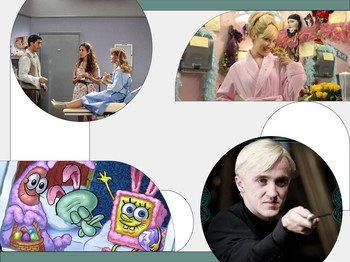Historically, the film industry was not feminist-friendly. In the past, many movies blatantly promoted misogynist and sexist views for their audiences; men and women, old and young. One example is Grease (1978) which tells the story of a girl named Sandy who's fallen for a greaser, Danny Zuko. With its high school setting and catchy musical numbers, Grease instantly became a rom-com classic that earned them several nominations at the Academy Awards.
Sadly, Grease's portrayal of the main female protagonist, Sandy, was enveloped in a patriarchal point of view. Sandy was depicted as a goody-goody girl who was "pure" and naive. Her character was written as the hopeless romantic girl who always put the boy she likes at the center of her universe even when he hurt her over and over again. The main problem with this kind of portrayal is how it enforces the one-dimensional archetype character. Sandy's personality was built on one thing only: her desperation to earn Danny's affection. It also doesn't help when the main male character only sees her as a sexual object.
Another example of the one-dimensional women characters could be found in many Disney princess movies. Take Cinderella (1950), for instance, she was the prototype of the damsel-in-distress character tropes. She spent most of her life suffering at the hands of her wicked stepmother and stepsisters and only finding her happiness when she met her prince, whom she only danced with for several hours. It was as if her sole purpose in life was to be saved by a man.
Criticism of the sexist portrayal of female characters is not new. Responding to demands of the fair representation of women, Hollywood then ventures into the exploration of other character tropes, which brings us to the rise of Strong Female Characters. Strong Female Character was supposed to be the antithesis of women characters who were portrayed as a weak sexual objects that needed to be rescued. At first glance, the presence of strong female characters offered a solution to this problem. Women who were previously pictured as weak are now portrayed as strong and capable of defending themselves. One example was Scarlett Johanson's Black Widow/Natasha Romanoff in Marvel's Avengers. Before Captain Marvel, she was the only female Avengers in the group. Clad in her leather suit, she possessed the exceptional skill of combat, weaponry, and constantly dominating the battleground with her all-male peers. She doesn't need anyone to rescue her because she is the rescuer.
Another example of this character was Andy or Andromache in The Old Guard (2020), played by Charlize Theron. Andy was part of an ancient group of immortal warriors called Old Guards, who became mercenaries to take missions to save people. Being the oldest warrior and the founding member of Old Guard, Andy's character was portrayed as the leader of the group. Just like Natasha Romanoff, Andy was depicted as the only female in the group and possessed highly advanced combat skills. And just like Natasha Romanoff, we rarely see them get emotional or worse, cry on screen. So, what's the problem with this kind of depiction?
The main problem with these strong female characters is they're often portrayed as masculine characters. There's nothing wrong with being a manly woman since gender is a spectrum. But this character trope repeats the same mistake as its predecessor; it depicts women in a one-dimensional character trait. Being feminine does not equal being weak, and being masculine does not equal being strong. Characters like Natasha Romanoff and Andy are prone to stereotypes; being tough means hanging with boys, fighting in combat, and showing little to no emotions. These are traits that have typically been credited to masculinity.
While traits like showing kindness and being vulnerable are typically credited to femininity. Many strong female characters are men in a woman's body. They speak like men, dress like men, and fight "like a man". Are there no strong qualities in being feminine? The consequences of this dense meaning of "strong" resulted in a misleading perspective that for women to be empowered, first, they must be masculine.
While strong female characters are dominating the movie industry, some can be good examples to depict female characters who are not afraid to embrace their femininity and empower themselves in the process. My personal favorite was Elle Woods in Legally Blonde (2001), played by Reese Witherspoon. Elle was a girly girl character, giving the audience a tsunami of femininity throughout the film. She likes the color pink, she goes to a nail salon when sad, and she likes dressing up. People underestimated her, categorizing her as the "dum-blonde" stereotype, which was also the legacy of sexist portrayal in cinema. But Elle was kind, loyal, persistent, and most importantly, she is smart. At the end of the day, she saves innocent people from being falsely accused of a crime. Elle Woods is the epitome of being girly, and yet she is also one of the strongest characters in movies with female protagonists.
The movie industry needs to reevaluate how women are portrayed in movies. Women can be both masculine and feminine at the same time, and being kind and vulnerable does not equal being weak. Women can be depicted as strong and empowered without eliminating their femininity. Therefore, we don't need another one-dimensional woman character, especially if they are portrayed through the lens of patriarchal values.
(ANL/MEL)


